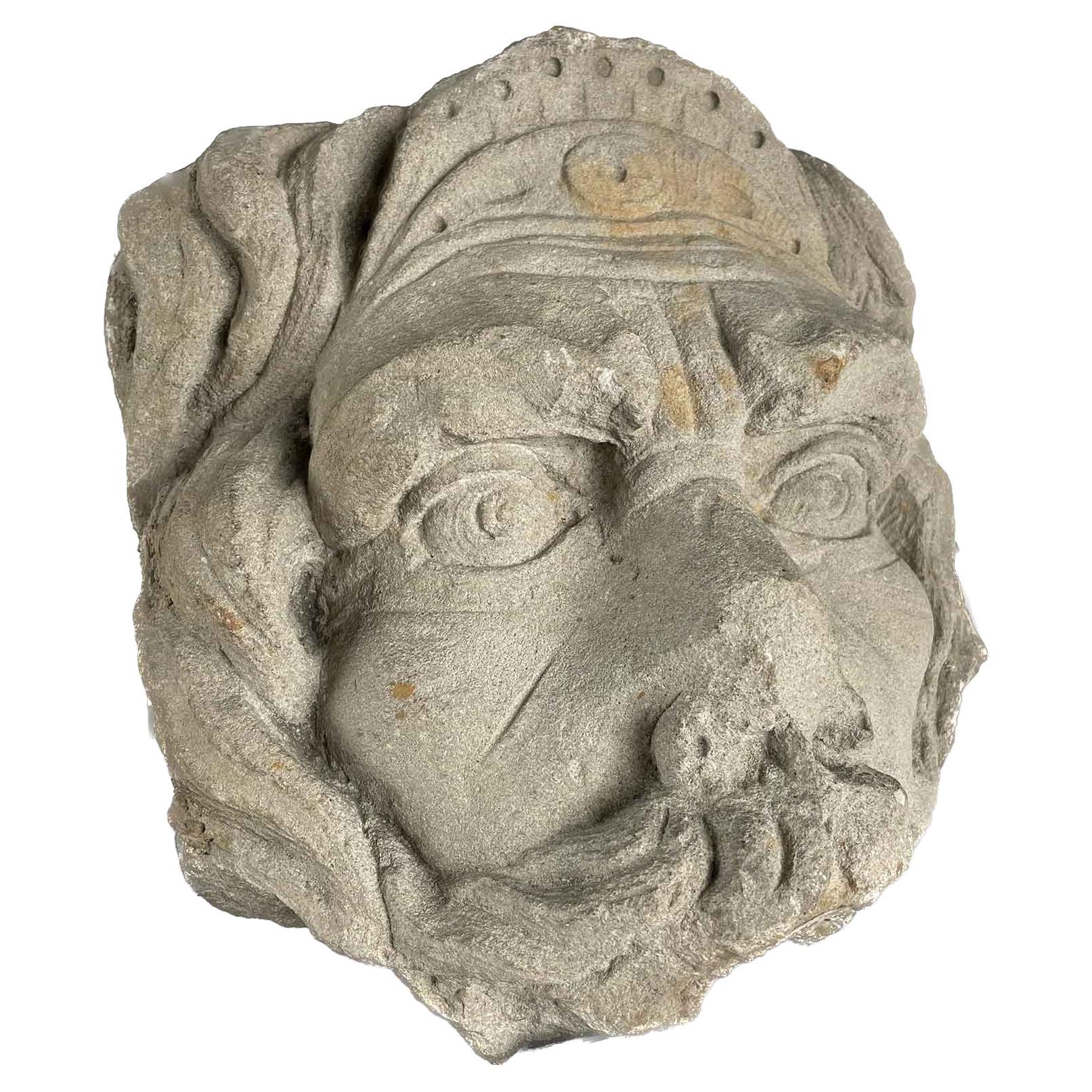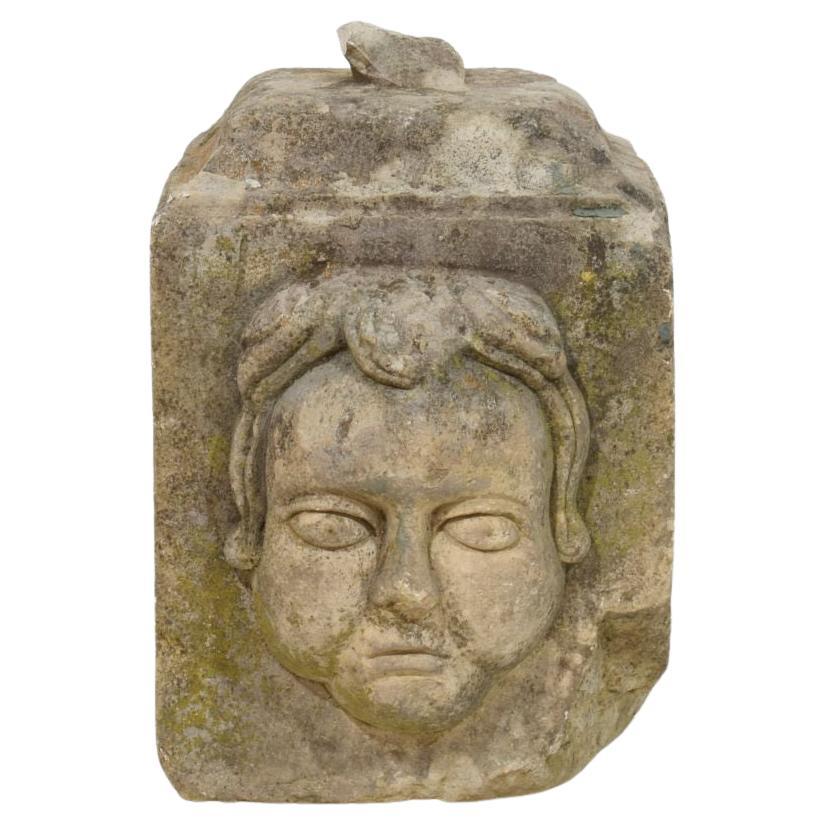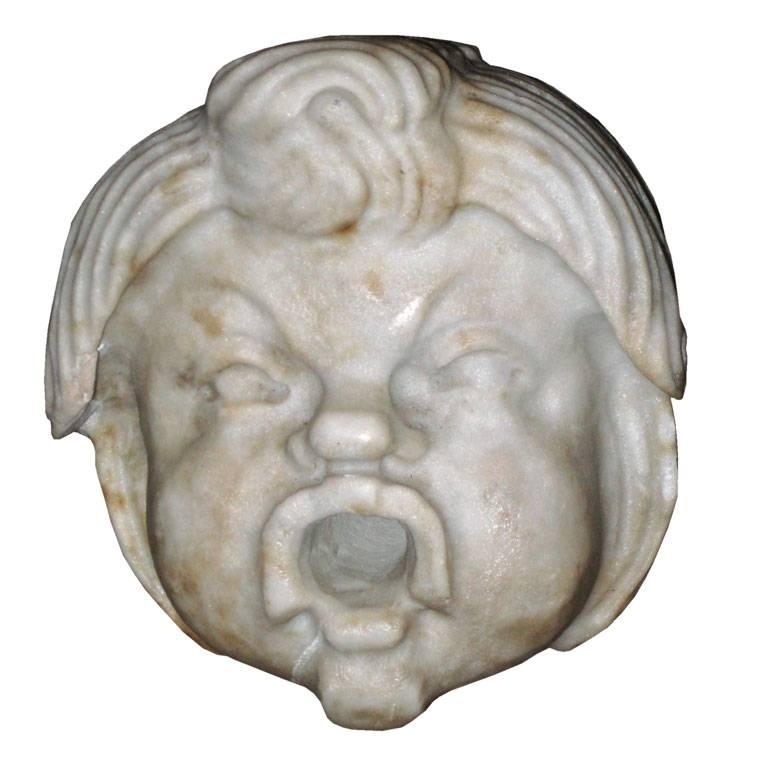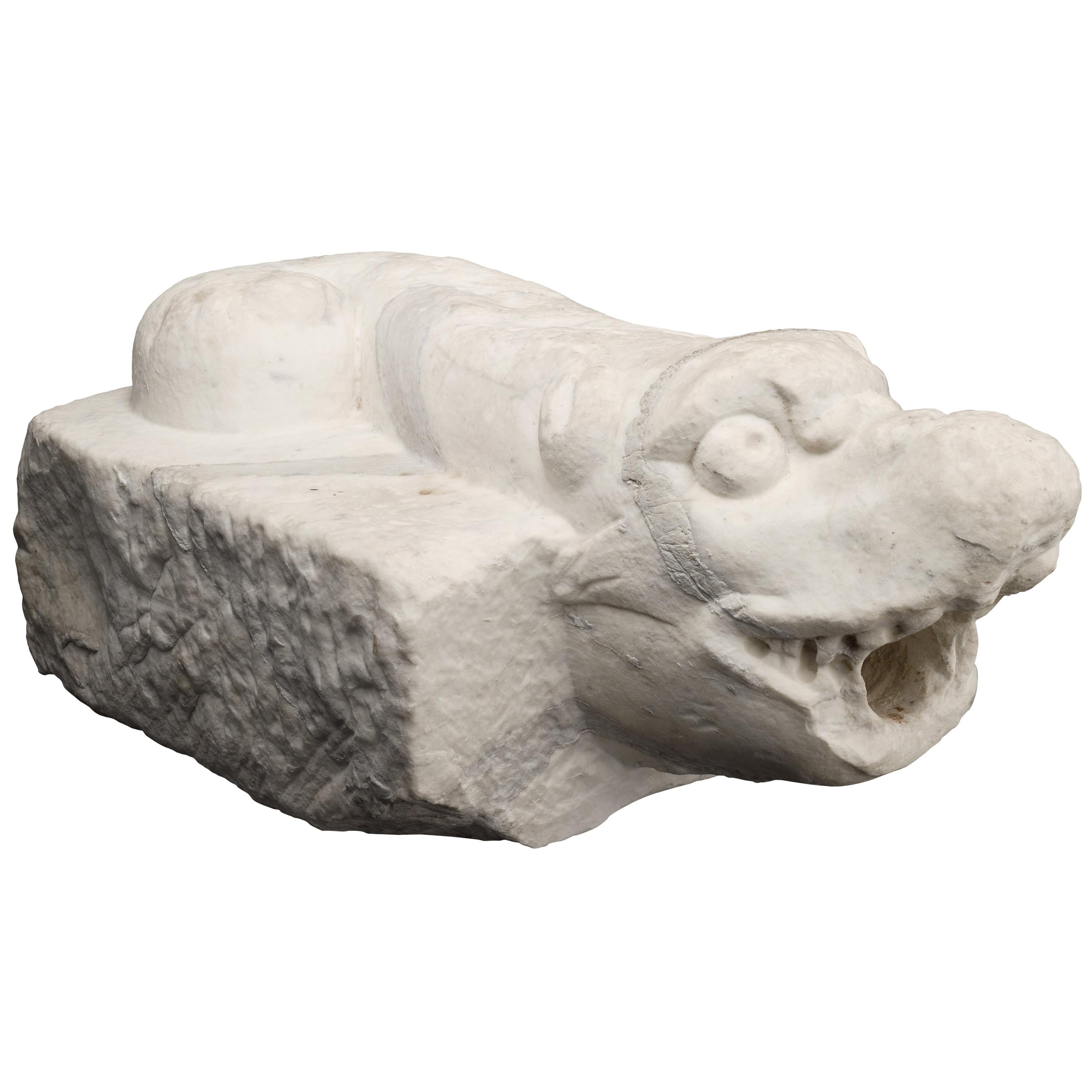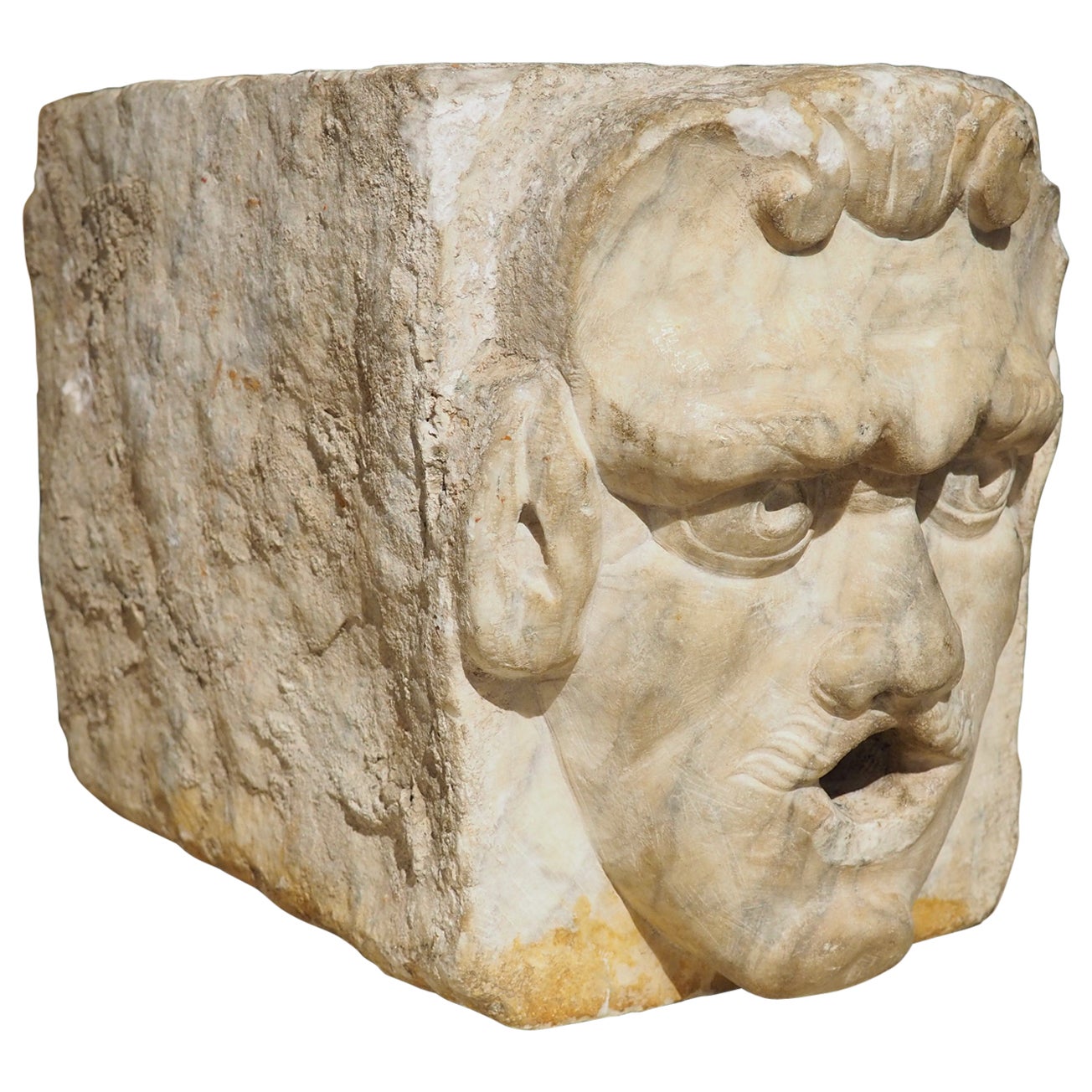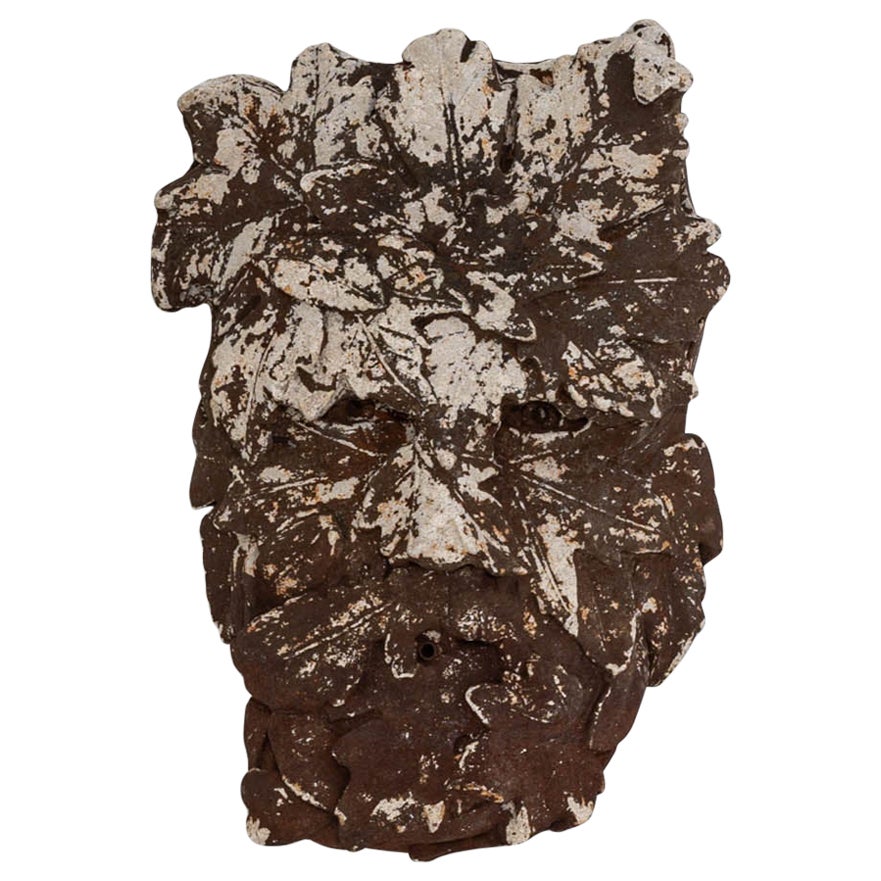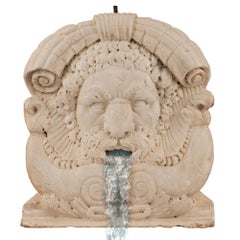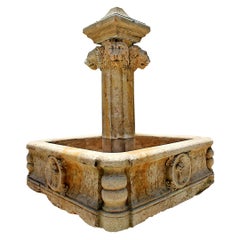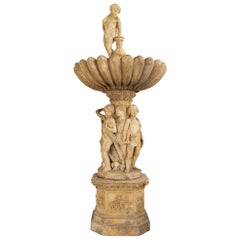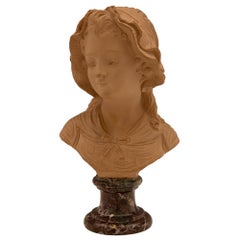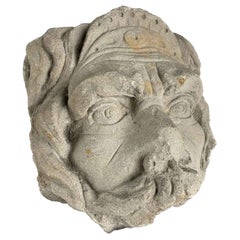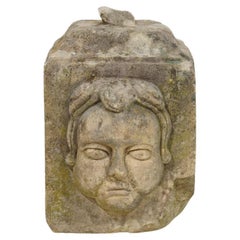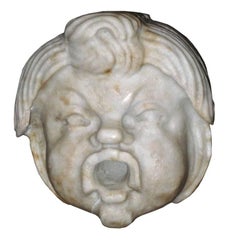Items Similar to Italian 16th-17th century Rosso Verona marble fountain head
Want more images or videos?
Request additional images or videos from the seller
1 of 11
Italian 16th-17th century Rosso Verona marble fountain head
$78,800
£59,741.23
€68,865.84
CA$110,977.15
A$123,065.46
CHF 64,661.77
MX$1,503,650.74
NOK 809,006.95
SEK 759,391.24
DKK 514,096.95
About the Item
An exceptional and most impressive large scale Italian 16th-17th century Rosso Verona marble fountain head. This rare and most important marble lion's head displays an open mouth from where the water falls. Wonderful and intricate attention to detail is showcased with deep carvings throughout his mane, highlighting each of the the lion's handsome details.
*Can be displayed as a fountain head or wall decor.
- Dimensions:Height: 24.75 in (62.87 cm)Width: 19.5 in (49.53 cm)Depth: 16.25 in (41.28 cm)
- Materials and Techniques:
- Place of Origin:
- Period:
- Date of Manufacture:1600s
- Condition:Wear consistent with age and use.
- Seller Location:West Palm Beach, FL
- Reference Number:Seller: 142841stDibs: LU949943039242
About the Seller
5.0
Gold Seller
Premium sellers maintaining a 4.3+ rating and 24-hour response times
Established in 1996
1stDibs seller since 2012
324 sales on 1stDibs
Typical response time: 1 hour
- ShippingRetrieving quote...Shipping from: West Palm Beach, FL
- Return Policy
Authenticity Guarantee
In the unlikely event there’s an issue with an item’s authenticity, contact us within 1 year for a full refund. DetailsMoney-Back Guarantee
If your item is not as described, is damaged in transit, or does not arrive, contact us within 7 days for a full refund. Details24-Hour Cancellation
You have a 24-hour grace period in which to reconsider your purchase, with no questions asked.Vetted Professional Sellers
Our world-class sellers must adhere to strict standards for service and quality, maintaining the integrity of our listings.Price-Match Guarantee
If you find that a seller listed the same item for a lower price elsewhere, we’ll match it.Trusted Global Delivery
Our best-in-class carrier network provides specialized shipping options worldwide, including custom delivery.More From This Seller
View AllItalian Early 19th Century White Carrara Marble Fountain Head Signed HVGOR
Located in West Palm Beach, FL
A stunning Italian early 19th century white carrara marble fountain head signed HVGOR. This most impressive and masterfully sculpted fountain head...
Category
Antique 19th Century Italian Fountains
Materials
Carrara Marble
17th-18th Century Italian Medieval St. Rosso Verona Carved Marble Fountain
Located in West Palm Beach, FL
An extraordinary 17/18th century Italian large scale Medieval st. square Rosso Verona marble hand carved fountain. The fountain with its grand scale one piece basin has a mottled bas...
Category
Antique 18th Century Italian Medieval Fountains
Materials
Marble
Italian 19th Century Terra Cotta Fountain
Located in West Palm Beach, FL
A spectacular and monumentally scaled Italian 19th century Terra Cotta fountain. The most impressive fountain is raised by an elegant octagonal ba...
Category
Antique 19th Century Italian Fountains
Materials
Terracotta
French 19th Century Terra Cotta and Rosso Levanto Marble Bust
Located in West Palm Beach, FL
A charming and finely detailed French 19th century Terra Cotta and Rosso Levanto marble bust. The bust is raised by an elegant circular mottled Rosso Levanto socle pedestal with a fi...
Category
Antique 19th Century French Figurative Sculptures
Materials
Marble
French Late 19th Century, Turn of the Century Fountain
Located in West Palm Beach, FL
A very unique French late 19th century- Turn of the century fountain. The composite stone fountain is of a mother seated on a rough terrain amidst flowers and foliate, with her child...
Category
20th Century French Fountains
Materials
Stone
A French 19th century Stone warrior statue
Located in West Palm Beach, FL
A charming French 19th century Stone warrior statue. This charming Stone statue of a warrior wearing his helmet is raised on a square base with a mottled edge. He wears a coat displa...
Category
Antique 19th Century French Statues
Materials
Stone
You May Also Like
20th Century Italian Stone Fountain Mask
Located in Milano, MI
This antique stone mask was probably used in a fountain. It is a very decorative Italian antique object. The mask fits as decorative object on a bureau o...
Category
Early 20th Century European Classical Roman Animal Sculptures
Materials
Stone
French 17th/ 18th Century Baroque Hand Carved Stone Head Ornament
Located in Buisson, FR
Wonderful 17th/ 18th century baroque hand carved stone head ornament. lovely folk art style.
France circa 1650-1750.
Weathered and some small losses.
H:24cm W:16cm D:20cm
Category
Antique 17th Century French Baroque Statues
Materials
Stone
$684 Sale Price
42% Off
Early 19th Century Italian Marble Fountain
Located in Water Mill, NY
Early 19th century Italian hand-carved marble fountain in a form of a putto.
Category
Antique 19th Century Italian Fountains
Italian Ancient Marble Sculpture Fountain, Late 16th Century
Located in Milano, IT
Sea monster
Carrara marble mouth fountain
Italy, late 16th century
It measures 13.8 x 31.5 x 18.9 in (35 x 80 x 48 cm)
State of conservation: some small evident gaps and widespread signs of wear due to outdoor exposure. The gray marks crossing it do not come from restoration, but are rather the natural veins of the marble.
This work has some morphological characteristics typically associated with the iconography of the sea monster: an elongated muzzle, sharp teeth, protruding eyes, elongated ears, and a coiled serpent's tail.
An in-depth series of studies on artistic depictions of the sea monster attempted to verify how this symbol evolved in antiquity in the European and Mediterranean contexts and how it gradually changed its image and function over time. The iconography itself is mutable and imaginative and its history is rich with cultural and artistic exchange, as well as the overlapping of ideas. This occurred so much that it is difficult to accurately pinpoint the "types" that satisfactorily represent its various developments.
However, we can try to summarize the main figures, starting from the biblical Leviathan and the marine creature that swallowed Jonah (in the Christian version, this figure was to become a whale or a "big fish", the “ketos mega”, translation of the Hebrew “dag gadol”). Other specimens ranged from the dragons mentioned in the Iliad (which were winged and had legs) to "ketos” (also from Greek mythology), the terrifying being from whose Latinized name (“cetus”) derives the word "cetacean". See J. Boardman, “Very Like a Whale” - Classical Sea Monsters, in Monsters and Demons in the Ancient and Medieval Worlds, in Papers presented in Honor of Edith Porada, Mainz am Rhein 1987, pp. 73-84).
In Italy the monster underwent yet further variations: it can be found in Etruscan art on the front of some sarcophagi representing the companion of souls, while among the Romans we find the “Pistrice” (cited by Plinio in Naturalis Historia PLIN., Nat., II 9, 8 and by Virgilio in Eneide: VERG., Aen., III, 427), which appeared in the shape of a stylized hippocampus or a very large monstrous cetacean and evolved into a hideous being with a dragon's head and long webbed fins.
During the Middle Ages, the sea monster was the object of new transformations: at this time, it is often winged, the head is stretched like a crocodile, the front legs are often very sharp fins - sometimes real paws - until the image merges with dragons, the typical figures of medieval visionary spirituality widely found throughout Europe (on this topic and much more, see: Baltrušaitis, J., Il Medioevo fantastico. Antichità ed esotismi nell’arte gotica, Gli Adelphi 1997).
In Italy during the 15th and 16th centuries, the revival of classicism - representative of the humanistic and Renaissance periods - led to a different reading of these "creatures". Indeed, the sea monster was also to find widespread use as an isolated decorative motif, especially in numerous fountains and sculptures where dolphins or sea monsters were used as a characterizing element linked to water (on this theme see: Chet Van Duzer, Sea Monsters on Medieval and Renaissance Maps, London, The British library, 2013).
From the morphological point of view, the "sea monsters" of this period are mostly depicted as hybrid figures, in which the body of a mythological or real being (a hippocampus, a sea snake, a dolphin), is joined to a head with a rather indistinct appearance. It was usually characterized by large upright ears, an elongated snout, sharp teeth and globular, protruding eyes; a complex and indefinite figure, both from the symbolic point of view and from that of its genesis.
The work we are examining is placed as a cross between the medieval sea serpent and the Renaissance dolphin, with stylistic features which recall the snake as often used in heraldry (such as the "snake" depicted in the coat of arms of the Visconti - the lords and then dukes of Milan between 1277 and 1447 - and which, for some, may be derived from the representations of the “Pistrice” that swallowed Jonah).
In the search for sources, Renaissance cartography and in particular woodcuts should not be neglected. See for example the monsters of Olaus Magnus, from the editions of the “Historia de gentibus septentrionalibus” (“History of the peoples of the north”) and the natural histories of Conrad Gesner, Ulisse...
Category
Antique 16th Century Italian Renaissance Animal Sculptures
Materials
Carrara Marble
15th or 16th Century Marble Gargoyle Fountain Spout from Arezzo, Italy
Located in Dallas, TX
Although when most people hear the word “gargoyle”, they probably envision small, winged creatures with grotesque visages. However, the phrase has a deeper meaning, encompassing any carved head (animal or human) that function as waterspouts.
From the Early Renaissance (late 1400’s/early 1500’s), our gargoyle fountain spout features a human-like face with pointed ears, possibly representing a centaur or a satyr. The roughly rectangular block of marble was hand-carved in Arezzo, in the Tuscany region of Italy. All sides except the front of the cream-colored stone have a sawed finish, resulting in a rough texture. The back has been excavated, adding to the character of the gargoyle. A 1 ½” diameter hole has been cut all the way through, forming an open mouth of the gargoyle. The gaping mouth was often a symbol used to conjure images of devouring giants and used to remind people that they are susceptible to certain forces.
Our 15th/16th century marble...
Category
Antique 16th Century Italian Renaissance Fountains
Materials
Marble
Vintage Italian Concrete Fountain Sculpture
Located in High Point, NC
Made out of concrete, this decoration from 20th-century Italy takes influences from Gothic architecture. With its face covered in vine leaves, this mascaron...
Category
20th Century Italian Neoclassical Revival Fountains
Materials
Concrete
